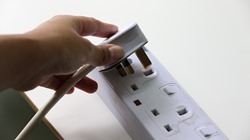The last thing you want to agonize about is your home’s electrical system. A proper functioning working system makes your life a whole lot easier than having to deal with regular breakdowns, repairs, and replacements. Ignoring potential hazards, such as hazards resulting from circuit breakers, fuses or faulty wiring, may pose a danger to you and your family.
Thus, it’s essential to understand what you see and hear in your electrical system. For example, a sparking noise from an outlet signals faults which may trigger a fire or an electric shock. Don’t ignore flashing lights as they could indicate an overloaded circuit or faulty electrical panel.
The following are the five things to know about electrical components.
1. Understand the circuit breaker panel
An essential device in today’s houses, the circuit breaker plays a considerable safety role. When a building has excess current flowing through its system, the circuit breaker cuts power until the problem is fixed. Without the circuit breaker panel, household electricity would pose the dangers of fires and other chaos resulting from equipment failure and wiring problems.
All circuit breakers must be readily identifiable and well-labeled with adequate working protection.
If you experience problems understanding your circuit breaker contact the artix7 team for solutions.
2. Electrical components often come with an ampere’s ratings know yours!
All electrical devices and wiring come with an amperage (amp) rating indicating the maximum electrical current they can carry safely. The majority of household circuits are rated 15 to 20 amperes. Large appliance circuits in the ilk of electric dryers get a rating of 30 to 50 amps and sometimes even more.
Whenever you decide on replacing or installing devices or wiring, all parts have to use the recommended amp rating suited for the circuit.
For example, a 20-amperage circuit must come with 12-gauge wiring rated 20 amps. In case you install a 14-gauge, 15-amp wiring on the circuit, you risk creating a fire hazard owing to the 20-amp rated circuit breaker may not shut-off in time when the 15-amp wiring overheats.
3. Make tight connections
Electric current travels through conductors such as metal contacts of outlets, wires and sockets, thus, tight connections between the conductors create for smooth transitions between conductors. Loose connections, on the other hand, act the same way as speed bumps, hampering the flow of electricity while creating heat via friction at the same time.
Extremely loose connections lead to arching; whereby current jumps through the air between conductors, resulting in tremendous heat.
4. Understand grounding and polarization
Grounding provides a simple path for roving current resulting from a fault or other issues in a circuit. Through polarization, current moves the source along the ‘hot’ wires and rebounds to the origin along the neutral wires.
Follow manufacturer’s wiring illustrations and comprehend and utilize your home’s polarization and grounding system.
5. Test for power
The sure way to rule out incidences of electric shock is by testing devices and wires for the presence of power before you start working on them. Cutting off the power supply isn’t enough.

